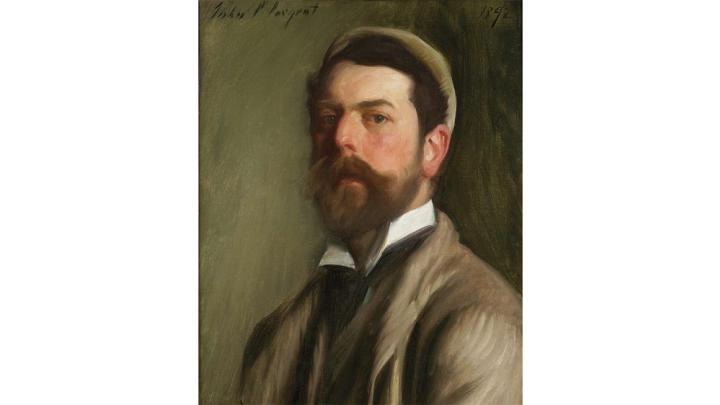Portraitist of the possessors of new money and old, friend and traveling companion of his patron Isabella Stewart Gardner, John Singer Sargent seemed the embodiment of a certain kind of establishment artist, cagey and successful in his profession. As Paul Fisher ’83, professor and chair of American studies at Wellesley, amply documents in his expansive new biography, The Grand Affair: John Singer Sargent in His World (Farrar, Straus and Giroux, $40), there were many more backstories to the man, his life, and his work, revealed not only in his many sketches of male nudes but in his marquee commissions and other works. From the prologue:
Before the discovery of Sargent’s private opus…many art historians regarded Sargent as an old-fashioned, high-cultural painter, antithetical to any form of compelling relevance. By the end of his life, thanks to a run of ultrafashionable portraits and some rather stodgy library decorations painted in Boston, the artist was pigeonholed by many as a glitzy society painter or fustian muralist.
Yet the rediscovery of Sargent’s fraught private life began a radical reconsideration…that has only gained momentum in the early twenty-first century. We can now see that Sargent’s social and aesthetic relevance—both to his time and ours—draws strength not only from his same-sex interests and his fascination with gender nonconformity but also from his engagement with ethnicity, race, and emerging globalism—by his representation of an ever-more-complex modernity and an ever-more-diverse and multicultural world. In spite of his sometimes colonialist or orientalist formulations, Sargent’s unique transnational perspective heralded the beginnings of an expanding polyglot global culture.
At home or abroad, it wasn’t just Sargent’s relations with men that we can now understand as productively rich. Sargent’s distinctively unconventional liaisons with women too also profoundly shaped his work and its long-term relevance. In forging his career…Sargent’s most typical artistic formula…took advantage of bold, theatrical, iconoclastic women….Sargent was increasingly obsessed with divas.…All his life, Sargent was powerfully drawn to dynamic, rule-breaking women…[and] his penchant for tapping into the scandals they created.…[I]t mattered which specific friends, sitters, and patrons Sargent chose, cultivated, and pursued.…It mattered that he immersed himself in non-Western places like Egypt and Turkey, that he embraced Jewish cosmopolitanism, and that he consorted with working-class models of diverse ethnicities and races like Rosina Ferrara in Capri, Nicola d’Inverno in London, and finally Thomas McKeller in Boston.








